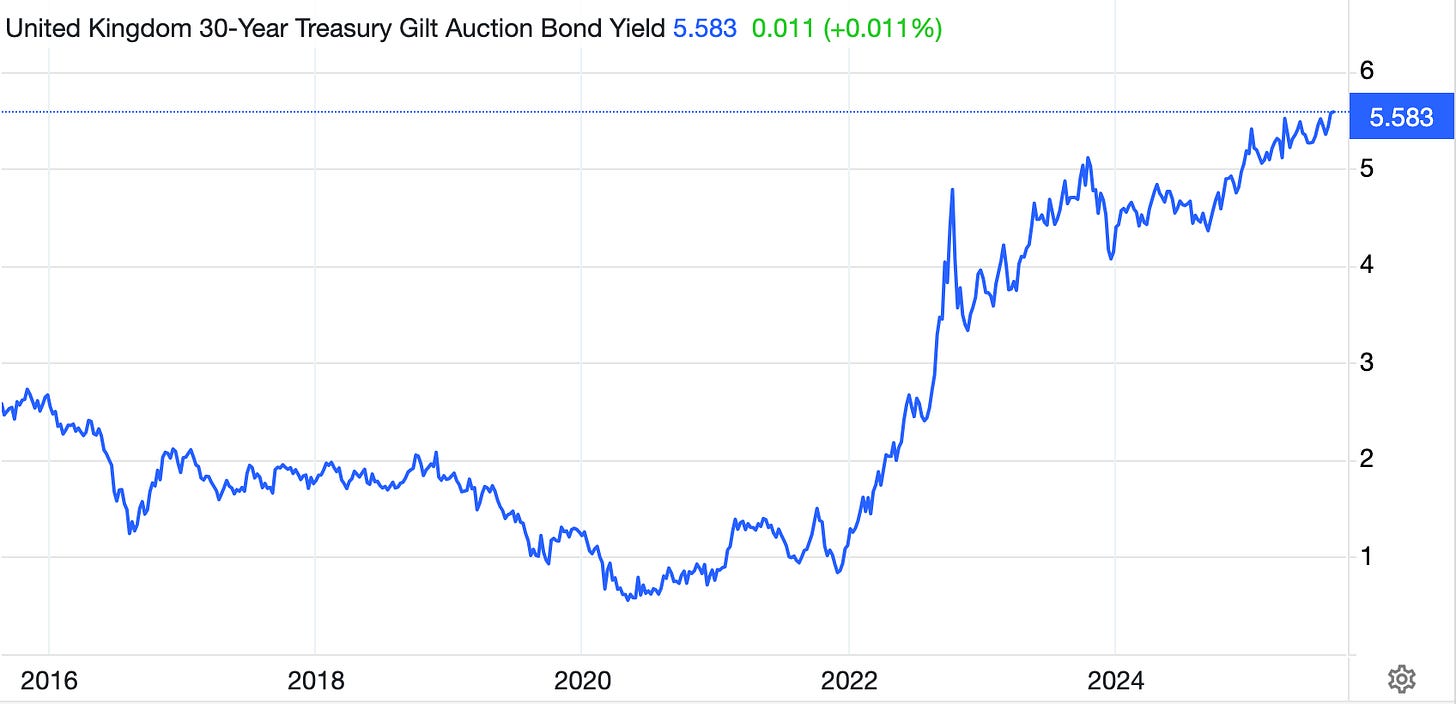Sterling’s inescapable debt trap
Rising gilt yields will force chancellor Reeves’ hand before her autumn statement in end-September or early October. It’s a debt trap from which politics denies a solution.
The situation is so dire that some prescient economists are pointing out the dangers of a situation developing which mirrors the sterling crisis in 1976, when the IMF was called in. This morning’s Sunday Telegraph headline was “Reeves heading for IMF bailout”, quoting the mounting concerns of several leading economists.
Clearly, things are hotting up, being the backdrop to the autumn statement. In this article, I outline the situation for my paid subscribers, and why the comparison with 1976 is so apt. But with other G7 nations in similar positions, I would question the ability of the IMF to bail Britain out this time.
In common with long-dated government bonds in other major currencies, long gilt yields continue to rise despite expectations of lower interest rates. From the chart above, it is clear that there is sufficient bearish momentum in gilt prices to drive yields even higher.
It adds to the chancellor’s dilemma as she prepares her autumn statement for which a date has yet to be set but is expected in about 6—7 weeks’ time. Debt interest is already a heavy and rising burden on her finances, as are the Treasury’s commitment to underwrite bond losses on the Bank of England’s balance sheet.
Will bond yields continue to rise before the autumn statement, even to the point of developing into a sterling crisis? And what can Reeves do to stabilise the situation?
Keep reading with a 7-day free trial
Subscribe to MacleodFinance Substack to keep reading this post and get 7 days of free access to the full post archives.


